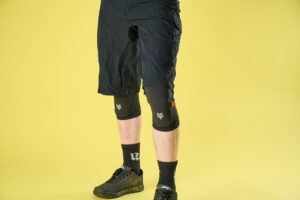Canyon's latest Nerve Al proves that there's much more to the brand than just value-for-money
Canyon Nerve AL 6.0 review
The AL 6.0 is the entry point into Canyon’s eight-bike strong Nerve range, which includes three women-specific models and a Shimano XTR-equipped flagship SL version.
Billed as ‘the super tourer for Alpine cross’ — obviously the meaning is somewhat lost in translation from German to English — the new Nerve AL is a 120mm-travel do-it-all trail bike with 650b wheels. There’s also a 29er version with 10mm less travel, but with only four models to choose from compared to the eight in 650b, Canyon’s priorities are clear.
In addition to the geometry revisions that bring increased standover clearance and more length to the top tube of the longstanding Nerve platform, Canyon has really stepped it up in terms of frame construction and finish. Gone are the goofy tubing profiles and clumpy forgings of previous models, replaced instead by sharp, clean lines that give a thoroughly modern profile. All in all, the Nerve frame looks incredible, and our only concern with the new layout was the rather tall head tube on the size L.
The Nerve is not shy on features either, with 142x12mm dropouts, a tapered head tube and internal cable routing. The jump in frame quality, however, has meant that the spec has, inevitably, taken a bit of a hit. No hollow-forged crank, no clutch rear mech and Shimano’s cheaper brakes mean that it doesn’t quite have the jaw-dropping build we’ve come to expect from the king of direct sales. Still, it’s all good-quality kit and it’s one of the cheapest bikes in test, so something was always going to have to give.
Suspension
One area where there’s been no penny pinching on the Nerve is the suspension. OK, so we’d prefer to see a bolt-thru fork for extra stiffness, but there’s no disputing the performance of the RockShox Reba: its action is smoother and more composed than anything else in this test. Set-up was also super-easy, thanks to guide pressures printed on the back of the fork leg and sag markers on the upper tubes.
The Fox CTD (climb, trail, descend) rear shock was also great. It felt really consistent in a wide variety of conditions and the rear suspension had a much tighter response than the longer-travel Canyon Spectral we tested last month. As such, we mostly rode the bike with the shock in descend mode, as this offered the most traction and comfort while still pedalling efficiently, and only swapped to the trail setting on the steepest climbs.
Components
Light wheels make any bike feel fast, and Canyon has used every trick in the book to chip away at the rotating weight on the Nerve: folding Kevlar, rather than steel, bead tyres, wafer-thin Schwalbe ultra-light inner tubes and Mavic’s excellent 650b wheels. No prizes for guessing then that we pinch-flatted the rear tyre 10 minutes into the first ride. A regular inner tube and a little more air pressure proved a simple fix.
Canyon has really dropped the ball though by fitting a non-clutch style XT mech in some groupset one-upmanship. Shimano SLX and Deore are both available with the latest Shadow Plus clutch technology at no extra cost.
Performance
It’s amazing the difference one small change can make to the handling of a bike. Flipping the stem upside-down on the Canyon, to compensate for the overly tall head tube, instantly transformed it from a somewhat uninspiring, bolt-upright pedestrian ride into a total ripper. Suddenly the handlebar was low enough to use as a lever to balance pedal forces, and the Canyon felt like a different bike. Taut and direct under power, with the best damping in test, the Canyon’s pace set it apart from the other bikes. It was still no match for the Vitus on the steepest descents, but it was faster and so much more rewarding to ride in every other situation.
>>> Click here to find out more about geometry with our handy guide
Verdict
The Canyon Nerve AL is the one bike in this test that gives back more than you put in. It pedals like stink, rips around corners and feels pretty darn impressive with the saddle slammed on the descents, too. That’s mainly because it had the most balanced suspension on test. Yep, the frame is still a touch short for a size large, and the monster head tube means you have to flip the stem to get the handlebar low enough to weight the front tyre, but the ride quality is head and shoulders above anything else at this price.

















